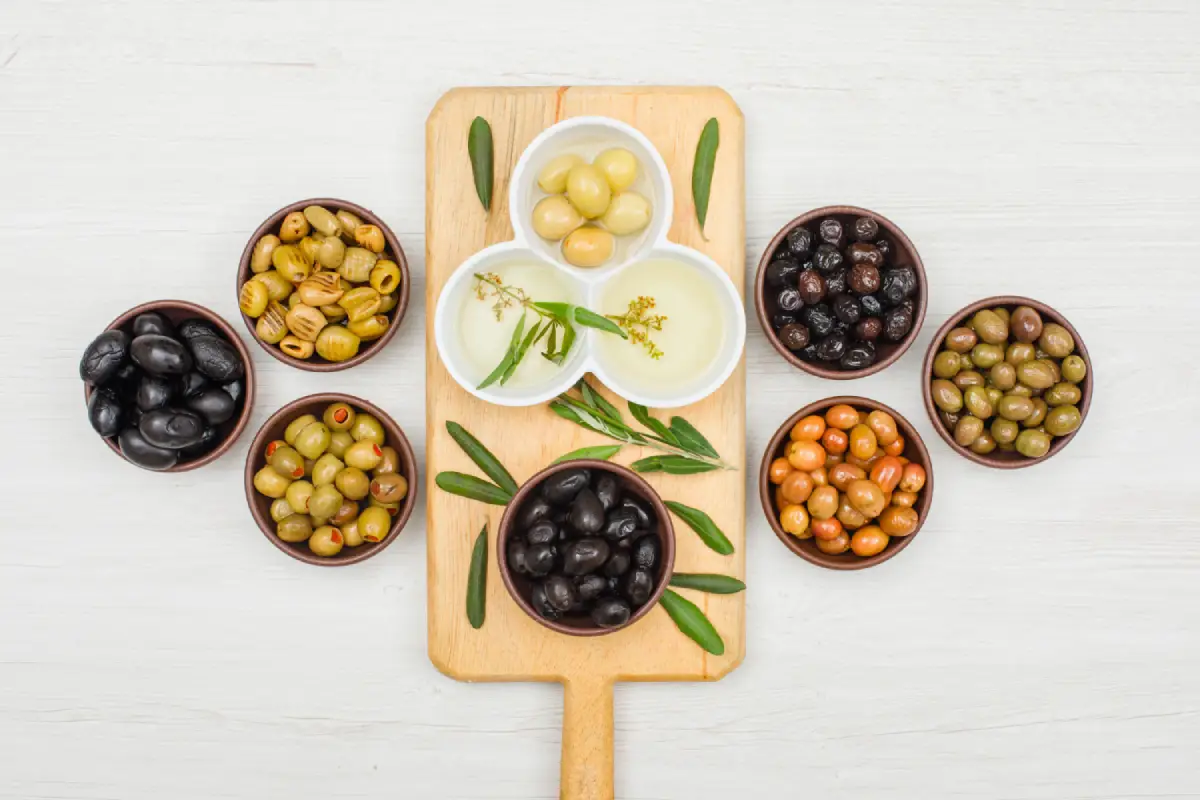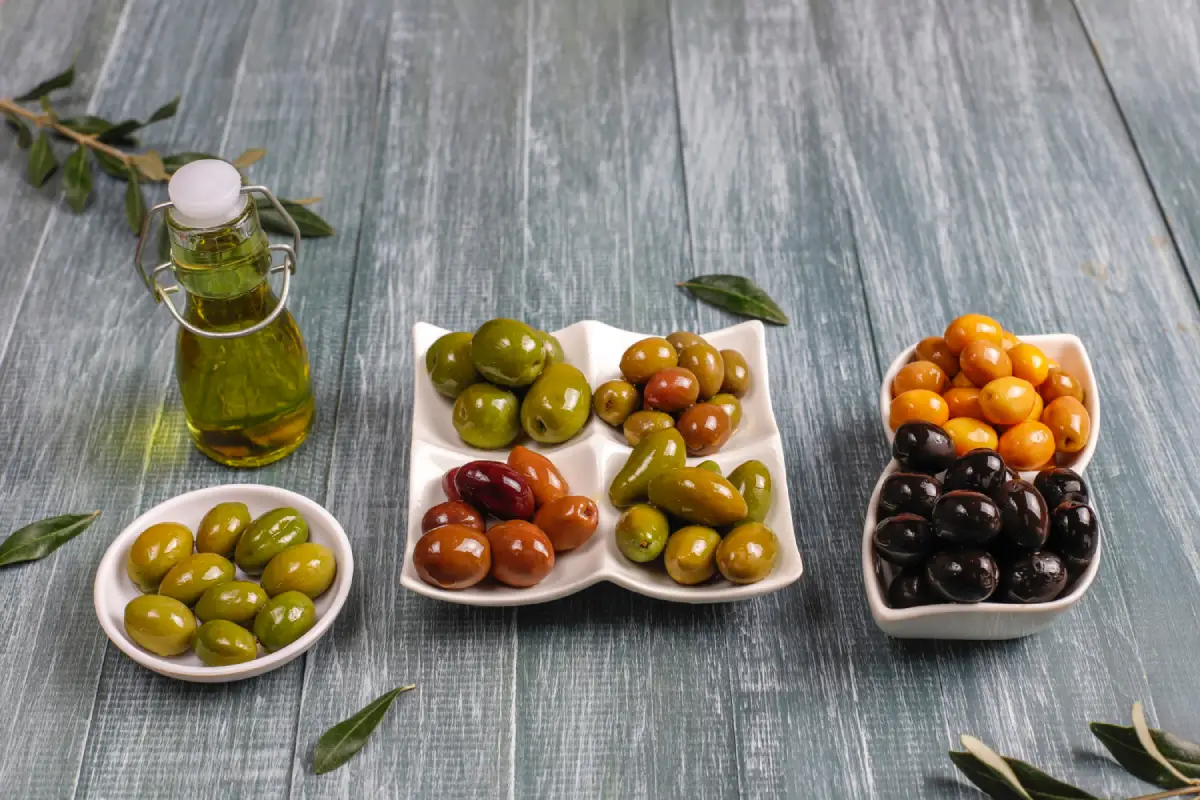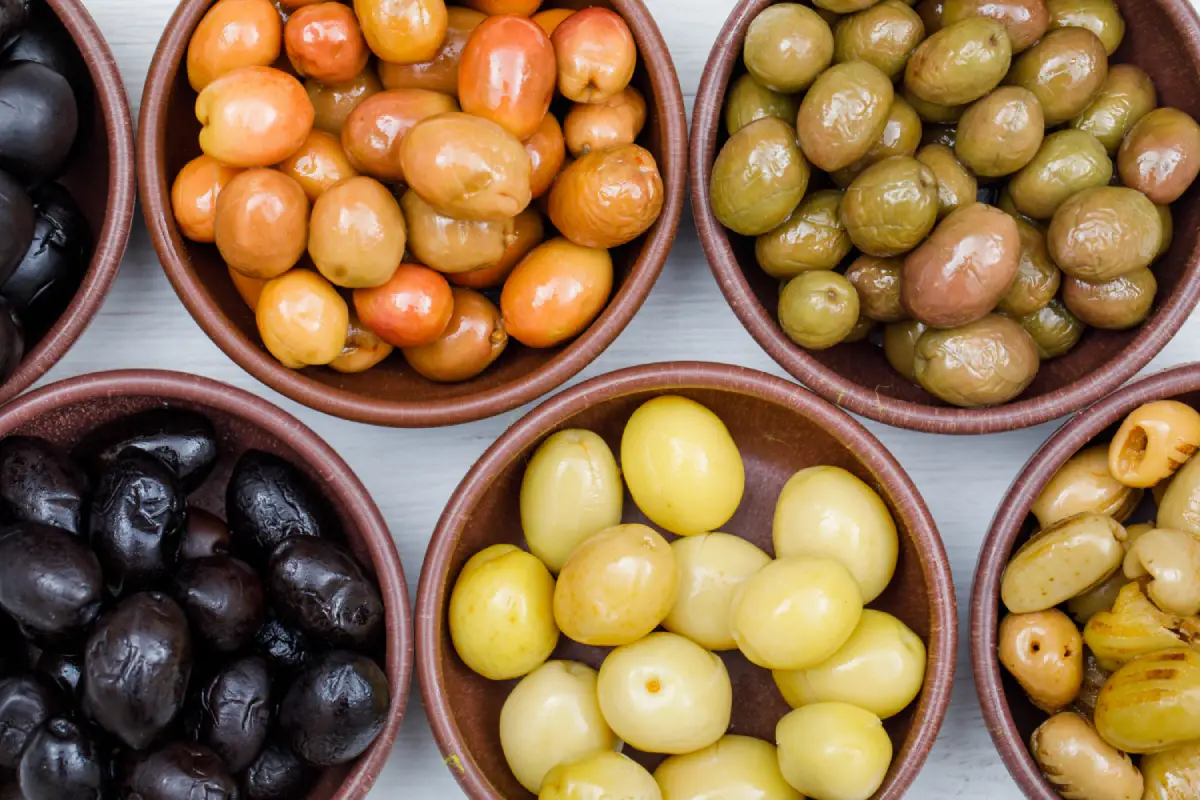Diving Deeper into the World of Olives
As we delve deeper into comparing Kalamata and regular olives, it’s essential to appreciate the diversity within the olive world. Beyond the renowned Kalamata, there is a wide array of olive varieties, each with its own unique characteristics. Regular olives, commonly found in grocery stores, come in numerous forms – from the green-hued Manzanilla to the dark-toned Mission. Each type offers distinct flavors, textures, and culinary applications.
This exploration into various olive types sets the stage for a more detailed understanding of what distinguishes Kalamata olives from regular ones. By broadening our knowledge of these varieties, we can better appreciate the nuances and culinary potential that Kalamata olives contribute to this diverse and flavorful family of fruits.
Kalamata Olives vs Regular Olives: A Detailed Comparison
- Taste and Texture: Kalamata olives stand out with their robust, fruity flavor and meaty texture. This sets them apart from regular olives, which range widely in taste. Some, like the mild Castelvetrano, are buttery, while others, like Gaeta olives, have a slight bitterness. How they’re processed – brined, dry-cured, or oil-cured – also shapes their flavor. This variety offers a rich tapestry of tastes.
- Appearance and Size: Kalamata olives are easy to spot with their dark purple color and almond shape. In contrast, regular olives show off a rainbow of colors from green to black, and their sizes vary greatly. These differences are more than just looks; they often hint at the olive’s ripeness and flavor.
- Growing and Harvesting: Kalamata olives come from a tradition-rich region in Greece, growing under specific conditions that give them their unique qualities. Regular olives, however, grow in diverse regions worldwide. Each place lends its own touch, affecting flavor and culinary use.
Nutritional Face-Off: Kalamata vs Regular Olives
When it comes to nutrition, both Kalamata and regular olives pack a healthy punch, but in slightly different ways. Kalamata olives are known for their high iron and calcium content. This makes them great for bone health and energy levels. Regular olives, depending on the variety, might have more vitamin E, which is excellent for skin health and immune support.
Despite these differences, all olives share some common nutritional benefits. They’re rich in heart-healthy monounsaturated fats and contain important antioxidants. These help fight inflammation and protect against chronic diseases. Olives are also low in calories, making them a healthy addition to any diet.
So, whether you choose Kalamata or another variety, you’re making a nutritious choice. Each type brings its unique health benefits to the table, contributing to a balanced and flavorful diet.
Culinary Uses and Pairings
Kalamata olives, with their distinctive taste, are a favorite in Greek cuisine. They shine in salads, like the classic Greek salad, and make delicious tapenades. Their strong flavor pairs well with feta cheese, tomatoes, and cucumbers, creating a harmonious blend in dishes.
Regular olives, thanks to their variety, are incredibly adaptable in the kitchen. They can add a subtle flavor to pasta dishes, a tangy kick to pizzas, and even a savory note to cocktails like martinis. The versatility of regular olives means they can suit a wide range of culinary styles and preferences.
Both Kalamata and regular olives offer unique flavors that enhance a variety of dishes. Whether you’re looking for a bold taste or a subtle addition, there’s an olive variety that fits the bill. So, experiment with these flavors in your cooking and discover the endless possibilities they bring to your culinary creations.
Cultural Impact and Popularity
Frequently Asked Questions (FAQs)
What makes Kalamata olives different?
Kalamata olives are unique for their dark purple color, almond shape, and rich, fruity flavor. They are native to Greece and have a meaty texture, making them distinct from other varieties.
Which is better: Kalamata olives or green olives?
The choice between Kalamata and green olives boils down to personal preference. Kalamatas offer a robust flavor, ideal for bold dishes, while green olives are milder, perfect for subtler tastes.
What is another name for Kalamata olives?
Kalamata olives are also known as Greek olives or Kalamon olives. This name reflects their origin in the Kalamata region of Greece.
What are the healthiest olives?
All olives are healthy, rich in monounsaturated fats and antioxidants. The healthiest type depends on your dietary needs and preferences. Kalamatas are high in iron and calcium, while other varieties may have more vitamin E.




